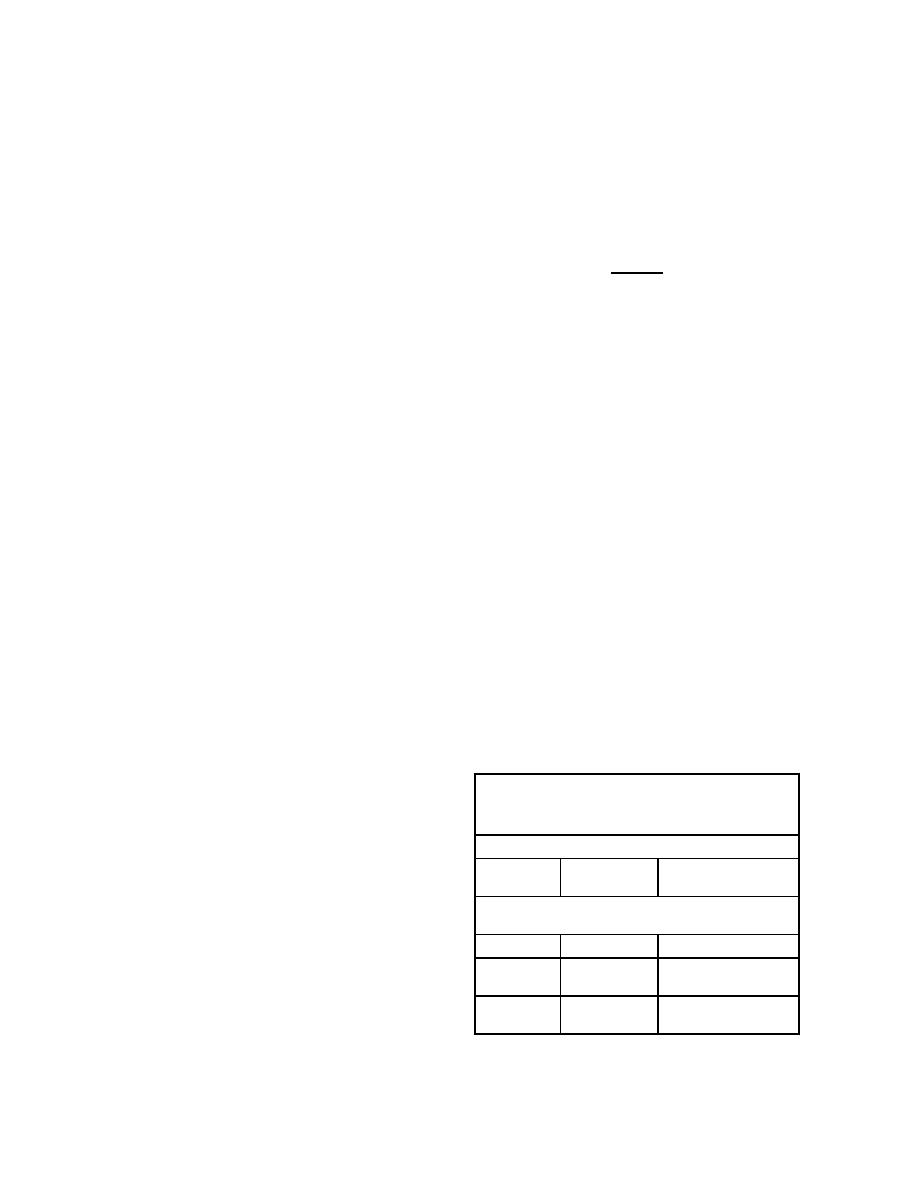
SB 742-1
f. If stuck expelling charges exhibit cracks with D-27. Rocket,
66mm
Incendiary,
M74,
TPA
exposed contents and/or moisture, they are to be treated (1340-H110)
as major defects, the lot condition coded accordingly, and
a. Evidence of grayish/white residue on round/
reported in accordance DA Pam 738-750.
warhead could in fact be an oxidation product from the
g. Loose components, evidenced by rattle inside the triethyl aluminum, but could also be residue from
projectile ogive during handling, is not a defect or a safety excessive epoxy sealant used to secure fill plug.
problem. Rattle is caused by looseness of spacers inserted
b. If grayish/white residue is found on warhead,
in base of projectiles during loading and packing to assure
perform the following test:
a tight pack.
Projectiles exhibiting this rattle are
considered acceptable if otherwise serviceable.
Warning
D-25. Projectile,
155MM,
M825
Series
Defect
Hydrochloric acid is corrosive and should be
Classification
handled with care. If acid contacts skin, it
should be immediately flushed with water
a. Projectile, 155MM, M825/M825A1 WP (1320-D528)
and/or sodium bicarbonate solution (baking
with missing or damaged obturating bands can cause a
soda and water).
critically short round.
Test solution is hydrochloric acid. Dilute concentrated
A missing or damaged band evidencing a crack, cut or
hydrochloric acid (commercial muriatic acid or
gouge extending across entire width of band is to
12n laboratory acid) with an equal volume of
be classified as a critical defect.
water to give approximately 6n hydrochloric acid.
A "loose" obturator band is a critical defect if the band
Test solution should be poured into a dropper
will not remain in the groove. If band can be
bottle for use. This solution should be obtained
manually removed for groove, but can also be
from the medical officer, post hospital, laboratory
"snapped" back into groove, round is to be
or pharmacy.
considered serviceable.
Neutralizing/cleanup solution is a saturated solution of
Circumferential movement of obturator is not classified
sodium bicarbonate (baking soda) in water. Mix
as a defect.
the baking soda into a container of water until no
more dissolves.
b. Canister component lot numbers have been
stenciled on each projectile. This is not a defect but
Place 2-4 drops of acid solution directly on powder on
makes end item lot identification more difficult. Item
warhead or on powder scraped off warhead into a
drawings provide correct location for projectile lot number.
plastic or ceramic container (dish). If residue is
oxidation product from triethyl aluminum, it
c. Corrosion on aluminum portion of M825 projectile
should dissolve away.
Follow procedures of
base is a critical defect.
Procedure for conduct of
reference directing clip be submerged in oil, and
inspection and defect classification criteria is same as that
report as a critical defect.
for M483A1 projectiles with old type "green" bases (SASIP
742-1320-94-250). Steel portion of M825 projectile base is
Residue, which is epoxy sealant, will not be affected by
that portion from base/body joint extending rearward for
the acid solution.
one-fourth inch. Damage to protective coating should be
After each test, acid wetted area should be neutralized by
repaired using M825 projectile drawings, provided there is
wiping with a rag wet with bicarbonate solution
no corrosion present.
in paragraph 5b.
d. M825 projectiles may rattle or exhibit other
internal noise when nose is tipped or shaken. This D-28. NSNs for Electrostatic Packing Material
condition is common due to slight looseness of
components and does not affect safety, firing or end item
MIL-PRF-81705
performance.
ELECTROSTATIC PROTECTIVE BARRIER
MATERIAL
a. Inspection of 8-inch M404 projectiles will include
NSN
TYPE
SIZE
inspection of expulsion charge bags. Bags may be made of
2-mil low-density polyethylene film that is known to
8135-01-
Type I
36 inches X 150 ft
deteriorate over time due to environmental stress
185-6816
roll
POLYETHYLENE BAG WITH INTERLOCKING SEAL
lifting plug gaskets.
CLOSURE
b. Any crack or tear in an expulsion charge bag is a
NSN
SIZE
major defect if moisture can enter or propellant escape.
Deterioration or damage to lifting plug gaskets to an
10 inches wide X 10
8105-00-
extent, which would permit entry of moisture, is also a
inches length
837-7756
major defect.
12 inches wide X 12
8105-00-
c. Expulsion charge covers can be removed using a
inches length
837-7757
spark proof tool. Following inspection, cover edges are to
be snapped back under the stake marks in the cup using
finger pressure.


 Previous Page
Previous Page
